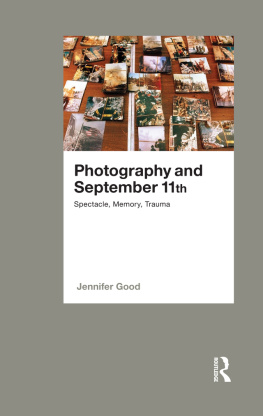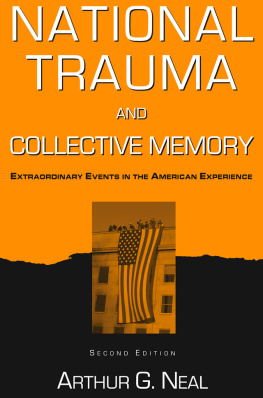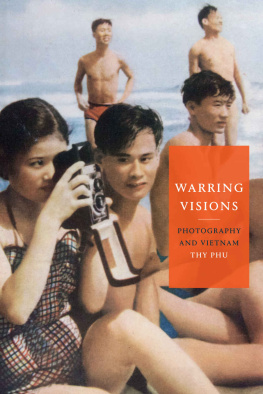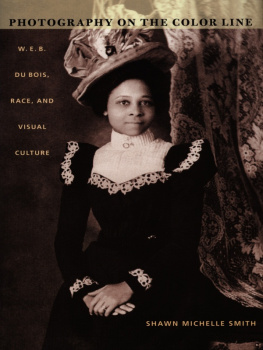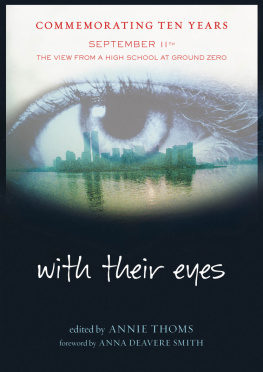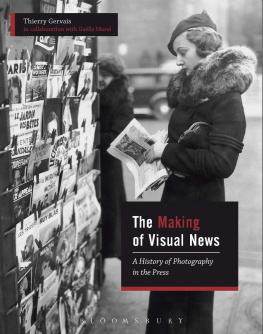PHOTOGRA PHY AND SEPTEMBER 11TH
PHOTOGRAPHY AND SEPTEMBER 11TH
Spectacle, Memory, Trauma
Jennifer Good
First published 2015 Bloomsbury Academic
Published 2020 by Routledge
2 Park Square, Milton Park, Abingdon, Oxon OX14 4RN
605 Third Avenue, New York, NY 10017
Routledge is an imprint of the Taylor & Francis Group, an informa business
Jennifer Good, 2015
Jennifer Good has asserted her right under the Copyright, Designs and Patents Act, 1988, to be identified as Author of this work.
All rights reserved. No part of this book may be reprinted or reproduced or utilised in any form or by any electronic, mechanical, or other means, now known or hereafter invented, including photocopying and recording, or in any information storage or retrieval system, without permission in writing from the publishers.
Notice:
Product or corporate names may be trademarks or registered trademarks, and are used only for identification and explanation without intent to infringe.
The author and publishers gratefully acknowledge the permissions granted to reproduce the third party copyright materials contained in this book.
Every reasonable effort has been made to trace copyright holders and to obtain their written permission for the use of copyright material. The author and publishers apologize for any errors or omissions in the copyright acknowledgements contained in this book, and would be grateful if notified of any corrections that should be incorporated in future reprints or editions of this book.
British Library Cataloguing-in-Publication Data
A catalogue record for this book is available from the British Library.
Library of Congress Cataloging-in-Publication Data
A catalog record for this book is available from the Library of Congress.
Typeset by Integra Software Services Pvt. Ltd.
ISBN 13: 978-1-4725-3331-9 (hbk)
For Nora
My thanks to Davida Forbes at Bloomsbury for her guidance, insight and patience, to the University of the Arts London for research sabbatical funding without which the manuscript for this book could not have been completed and to my colleagues at London College of Communication, particularly Paul Lowe, for their support and advice. Thanks also to the students and staff of the Art History department at the University of Nottingham for the various roles they played in the earliest stages of the research, particularly Simon Baker, and also Mark Rawlinson and Marquard Smith, for their detailed and formative comments. As well as years of friendship and moral support, Suzy Freake provided specialist feedback on for which I am most grateful. Special thanks to Professor John Tulloch for his generosity and guidance over several years in refining the vision of the book and preparing it for publication, and to the anonymous peer reviewers whose feedback at the proposal and manuscript stages was invaluable. Finally, biggest thanks to my parents, Ken and Mary Good, for their constant encouragement in every chapter and for making it possible in the most practical of ways to get the job done.
PREFACE:
I WAS THERE
Photographs that everyone recognises are now a constituent part of what a society chooses to think about, or declares that it has chosen to think about. It calls these ideas memories, and that is, over the long run, a fiction. Strictly speaking, there is no such thing as collective memory part of the same family of spurious notions as collective guilt. But there is collective instruction.
SU SAN SONTAG
My first encounter with the news of a plane hitting the World Trade Center towers came not via broadcast media but by phone. I had just landed back in London after the university summer break and received the call from my boyfriend as I waited at baggage claim. A passenger jet had crashed into one of the twin towers, and people were jumping. Throughout my long bus journey back to campus, he checked in with updates as the story unfolded, and I tried to put together mental images of the improbable scenes he was describing as he sat in front of his television screen. A second plane fire, dust and smoke collapse. Hundreds dead. Thousands. I eventually arrived at my empty house, turned on the TV and sat transfixed until long after midnight with my coat on and my unopened suitcase by my side. I watched the planes hit and the towers fall again and again and again.
I was not in Lower Manhattan, but I was there. Is it wrong to say this? Is it not disrespectful outrageous even? to compare my experience to that of those who inhaled the dust, ran for their lives or lost family members? Of course it is. But, in another sense, as specific as my own Euro-American perspective was, I was as there as the majority of people who experienced the event around the world, were moved, impacted and changed by it. That afternoon, once I had landed on my couch and turned on the television at a remove of a few hours and thousands of miles, time and space somehow took on a new character. I watched the images on repeat as breaking, rolling tele-presence took over scheduled programming on every terrestrial channel. News anchors abandoned by their usual air of reassuring authority tried to make sense of what they were seeing based on no more information than I myself could see before my eyes. They did their best to guide me as the early images of the first impacts aftermath were supplemented and mixed with later developments and live footage from the scene as it unfolded. Neither of us, it seemed, could be sure what was real time and what was not (was that the first plane or the second? Oh my god, is it happening again?). I would not articulate this clearly until several years later, but somehow, on that day, being in a particular place at a particular time was crucial, and yet did not mean what it might have meant before in quite the same way.
Everywhere I went over the several years of researching this work, people told me stories. This is an unusual response to hearing about someones academic research, which can sometimes be a conversation-killer. When I answered the question, what are you working on?, invariably in response came a personal story of where this person was at the time they had heard or seen the news. These ranged from experiences of watching from bedroom windows in downtown New York as the towers fell, to those who remember sitting in front of TV screens on the other side of the world, as I had done, and searching for the words to explain to their kids what they were seeing. I learned that personal testimony, even for those whose experience had been no more first-hand than mine, was important. I learned that the ownership and narrative retelling of these stories was also important. But, even more than that, I learned the importance of pictures. Often, a persons way of telling me that they were there was to talk about the photograph that had moved them the most. The specific picture varied from person to person and might have been encountered hours or weeks afterwards, but as I heard these stories, it became clear to me that this was a kind of personal witnessing that had its own special importance. And, just as the distanced, mediated nature of the experience could be said to involve a kind of shift in the meaning of time and place, so the respective roles of words and pictures had somehow been altered too. Whereas in the usual order of things we would hear a breaking news story and then see the photographic evidence that made it real, this time the pictures came before the explanation. Finding words was a new sort of challenge (my friends had to try to explain unspeakable things to their children before war, violence, loss but never as it was happening live in front of their eyes in a repeated televised loop), and words took on a new relationship to images. Like the TV newsreaders who struggled to believe their autocues and their eyes, my experience of seeing the captionless images and being lost for words was typical of millions. I might have been able to utter, the twin towers have fallen down, but because everyone was seeing it all at once, as soon as the words became sayable, they were already redundant. In actuality, what happened was that I called my family to say that I did not know what to say. We sat on our respective couches, eyes fixed on our screens and shared our silence down the telephone line.

